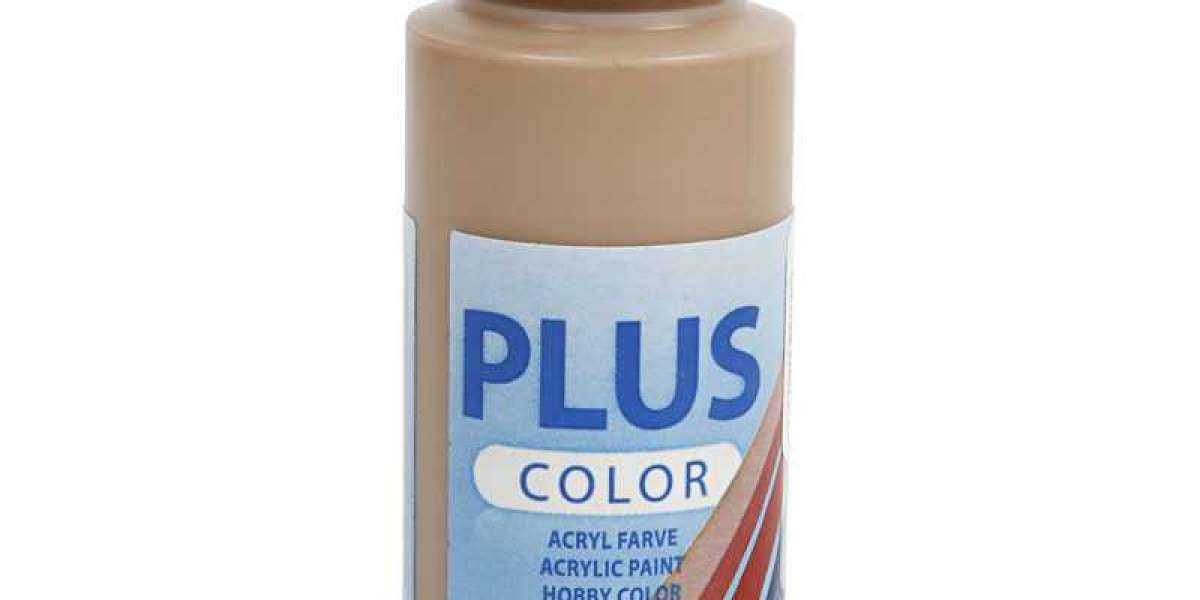Among the many colors in an artist’s palette, brown acrylic paint often goes unnoticed—yet it is one of the most versatile and essential pigments in the world of painting. Rich, earthy, and adaptable, brown acrylic paint plays a foundational role in achieving depth, realism, and natural tones in artwork. Whether you're a beginner experimenting with color or a professional artist creating complex compositions, understanding the applications, blending techniques, and emotional undertones of brown can significantly enhance your artistic expression.
In this blog, we’ll explore everything from the origin and shades of brown acrylic paint to its uses, techniques, and tips for mastering it in your creative process.
The Earthy Origins of Brown in Art
Brown has been used since ancient times in cave paintings, often created from natural pigments like clay, soil, and iron oxide. In modern art, brown acrylic paint captures these earthy tones with precision and consistency. Acrylics, known for their fast-drying properties and vibrant finishes, make brown an even more dynamic color for artistic exploration.
Why Choose Brown Acrylic Paint?
Artists choose brown acrylic paint for its warm, grounding presence in compositions. Here's why:
Neutral yet complex: Brown sits between warm and cool colors, making it perfect for balancing a palette.
Great for shading and realism: It helps create shadows, skin tones, wood textures, and landscapes.
Blends beautifully: It mixes well with other hues, expanding your color range effortlessly.
Available in various shades: From burnt umber to raw sienna and chocolate brown, each tone brings a unique mood.
Popular Shades of Brown Acrylic Paint
Although we’re avoiding brand names, it's useful to know the common shades artists work with:
Burnt Umber – A deep reddish-brown great for shadows and rich wood tones.
Raw Umber – Cooler than burnt umber, useful for earth and soil effects.
Raw Sienna – A lighter, yellowish-brown ideal for sunny, warm highlights.
Van Dyke Brown – A very dark, almost black-brown used for depth and contrast.
Chocolate Brown – Smooth and rich, often used in portraits and still life.
Techniques for Using Brown Acrylic Paint
1. Underpainting
Start your painting with a thin layer of brown acrylic paint to define values and create depth before layering other colors. This technique helps maintain a cohesive tone throughout your piece.
2. Layering and Glazing
Brown’s transparency in diluted form makes it ideal for glazing. Add layers of thin brown acrylic paint to adjust shadows or add warmth without overpowering your artwork.
3. Dry Brushing
Use dry brushing with brown acrylic paint for texture effects, like weathered wood, tree bark, or dirt pathways in landscapes.
4. Mixing Custom Browns
Mixing primary colors (red, yellow, blue) in varying amounts can create personalized browns. Enhance your understanding of how brown acrylic paint interacts with other colors for greater control.
Mixing Tips for Richer Browns
For a warmer brown: Mix red and yellow, then add a touch of blue.
For a cooler brown: Mix blue and orange, adjusting for balance.
For lighter tones: Add white to your brown mix.
To mute intensity: Add a hint of the complementary color (like green or purple).
Understanding how to create brown from scratch gives you more flexibility and prevents dependency on pre-mixed tubes.
Best Uses of Brown Acrylic Paint in Different Art Styles
Landscape Painting
Earth, trees, bark, and rocks all rely heavily on brown acrylic paint for realism and depth. Layering different shades of brown captures the diversity of nature.
Portraiture
Skin tones are often built using brown in combination with reds, yellows, and whites. Brown acrylic paint is key to creating realistic shadows and mid-tones.
Abstract Art
Even in abstract compositions, brown acts as a stabilizing hue that can ground bold, vibrant colors or serve as a neutral background.
Still Life
From rustic furniture to ripe fruit and vintage objects, brown acrylic paint adds texture, warmth, and familiarity to still life arrangements.
Emotional and Symbolic Meaning of Brown in Art
Brown evokes stability, reliability, and simplicity. It symbolizes the earth, natural materials, and human connection to nature. Artists often use brown acrylic paint to create moods of comfort, nostalgia, and humility.
In design, brown can reflect luxury (like leather or wood grain) or minimalism, depending on the shade and context.
Tips for Working with Brown Acrylic Paint
Start with a toned canvas: Painting on a lightly brown-tinted canvas can unify your tones.
Don't rely solely on black for shadows: Brown creates more natural-looking depth.
Use brown in skies and clouds: A small amount adds realism and weight to skies, especially during sunsets.
Try combining brown with metallics: Add a touch of gold or bronze for a vintage or aged effect.
Cleaning and Storing Your Paint
Brown acrylic paint, like all acrylics, dries quickly. Always wash brushes immediately after use with water. Seal your paint containers properly to prevent them from drying out. If your paint thickens over time, a little water or acrylic medium can revive its consistency.
Sustainable Practices with Brown Acrylic Paint
Eco-conscious artists can opt for environmentally friendly palettes and dispose of acrylic waste properly. Acrylics are plastic-based, so avoid rinsing excess paint down the drain. Instead, wipe excess onto a paper towel and dispose of it with solid waste.
Though often underestimated, brown acrylic paint is a powerhouse in the hands of any artist. From rich earth tones to realistic skin shades, it allows for creativity that’s grounded, expressive, and visually impactful. Mastering its use opens doors to a more nuanced and professional approach to painting.
So the next time you reach for vibrant reds or electric blues, don’t forget the depth and dimension a little brown can bring.






